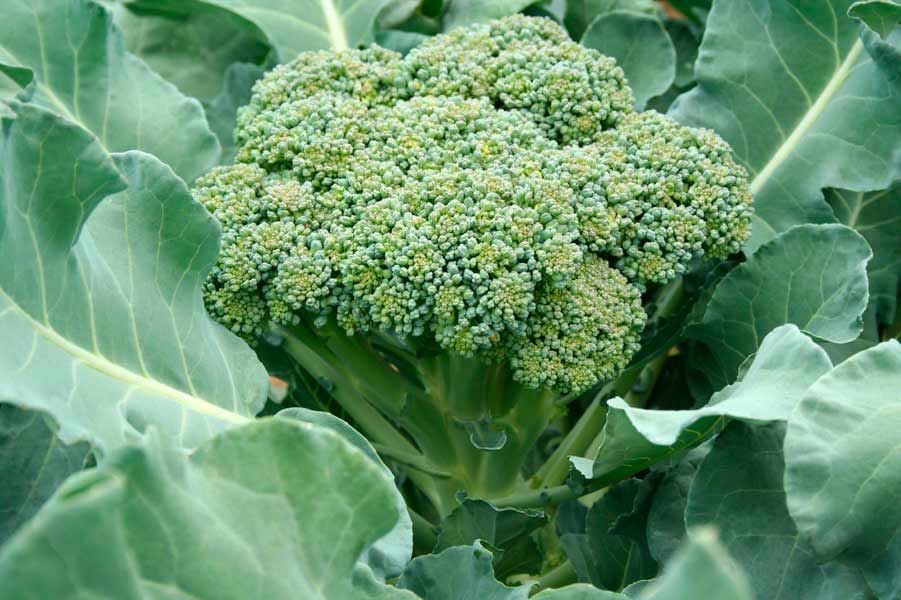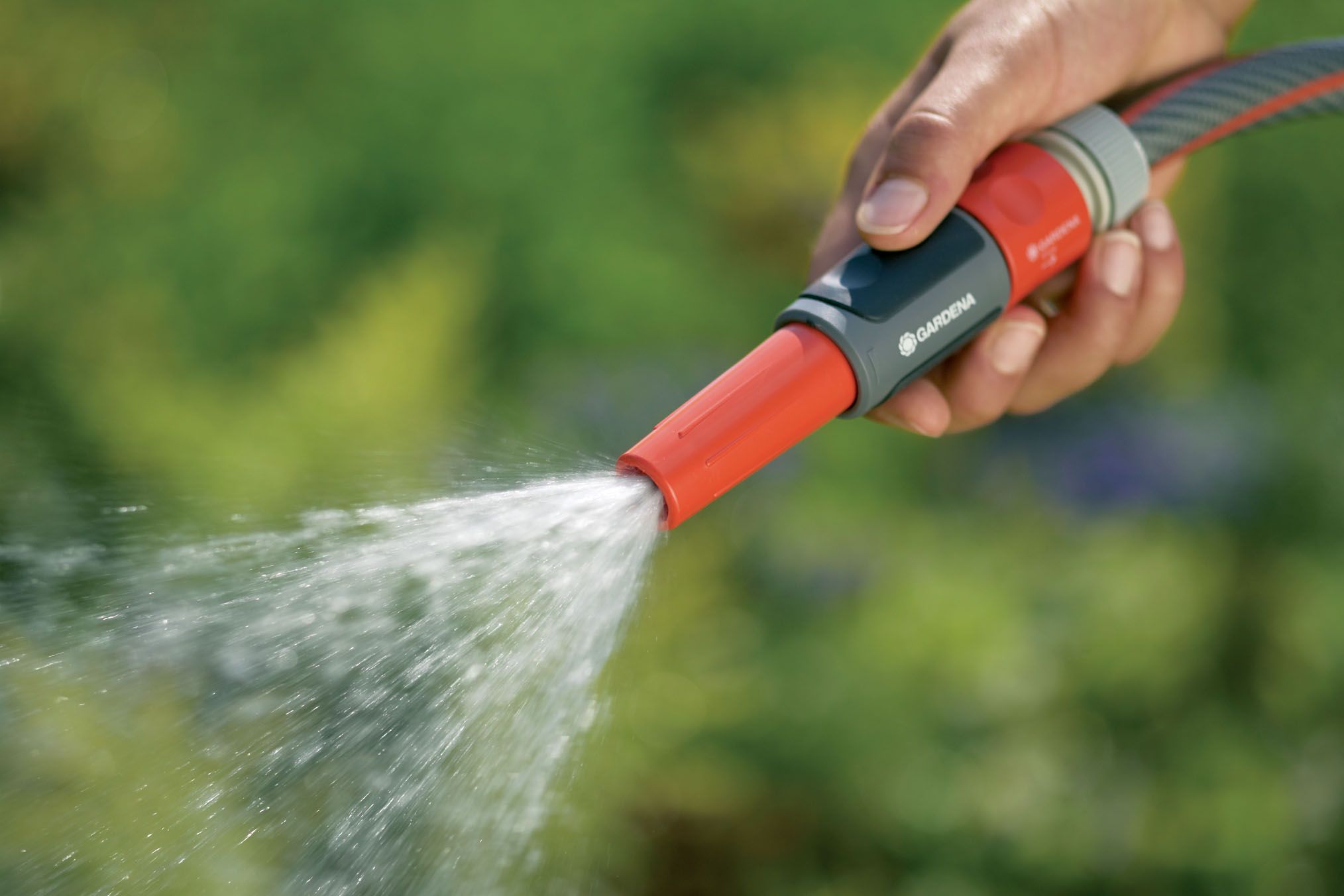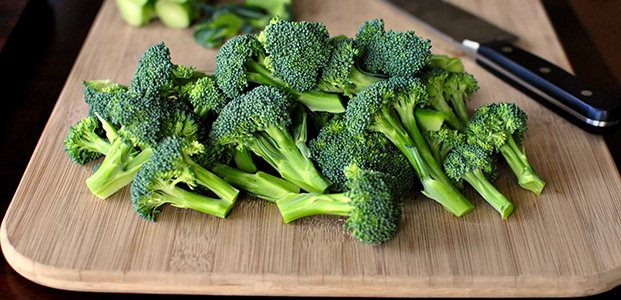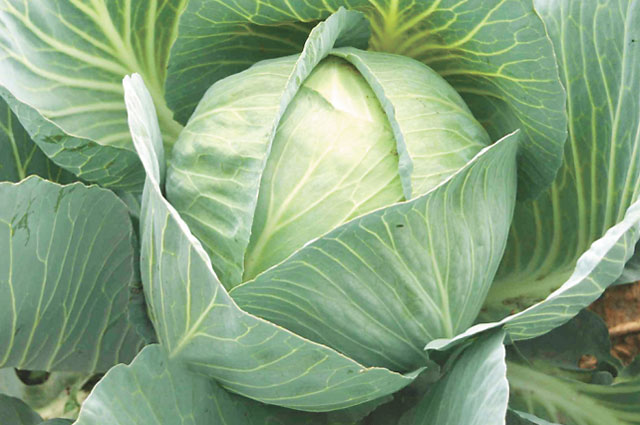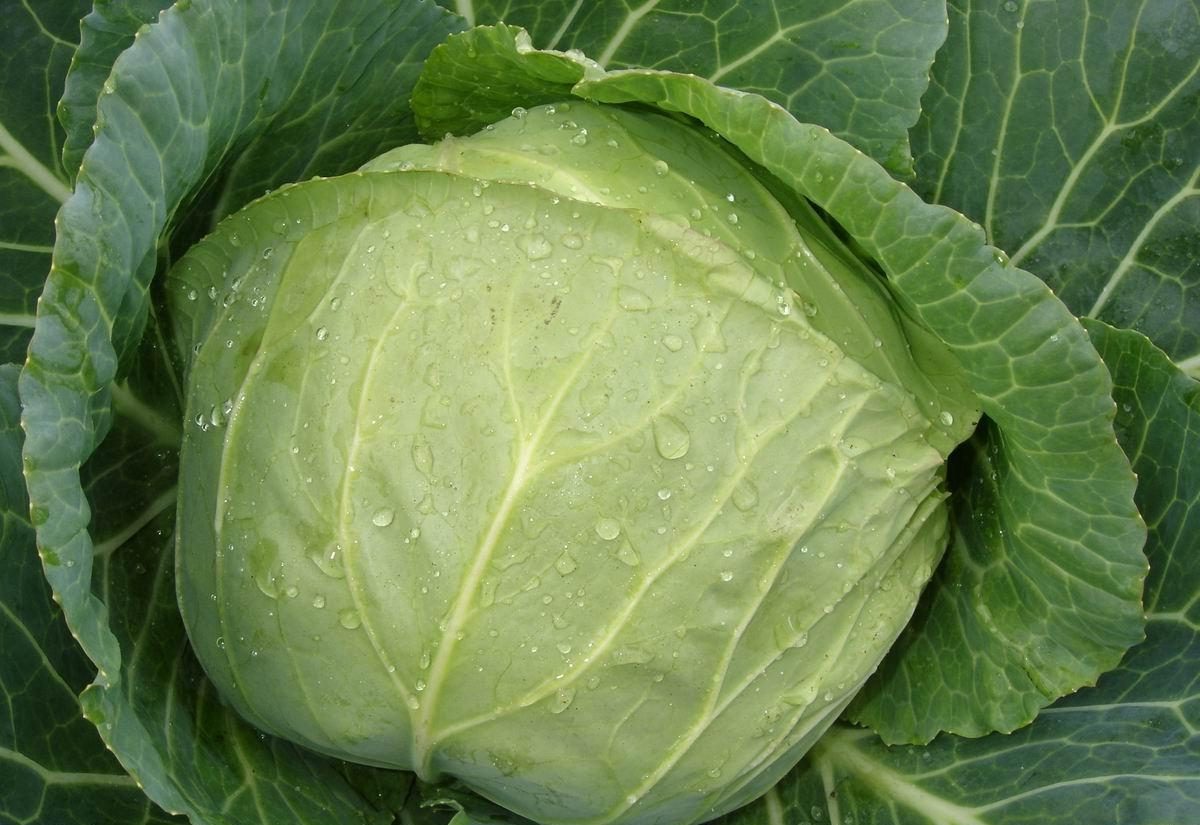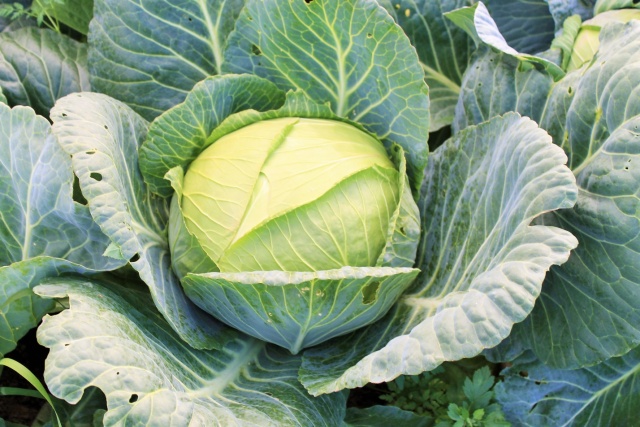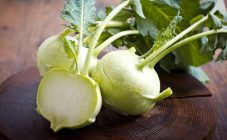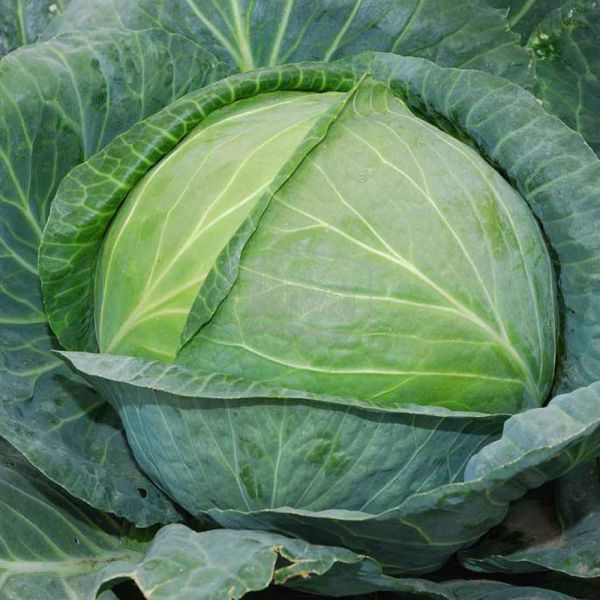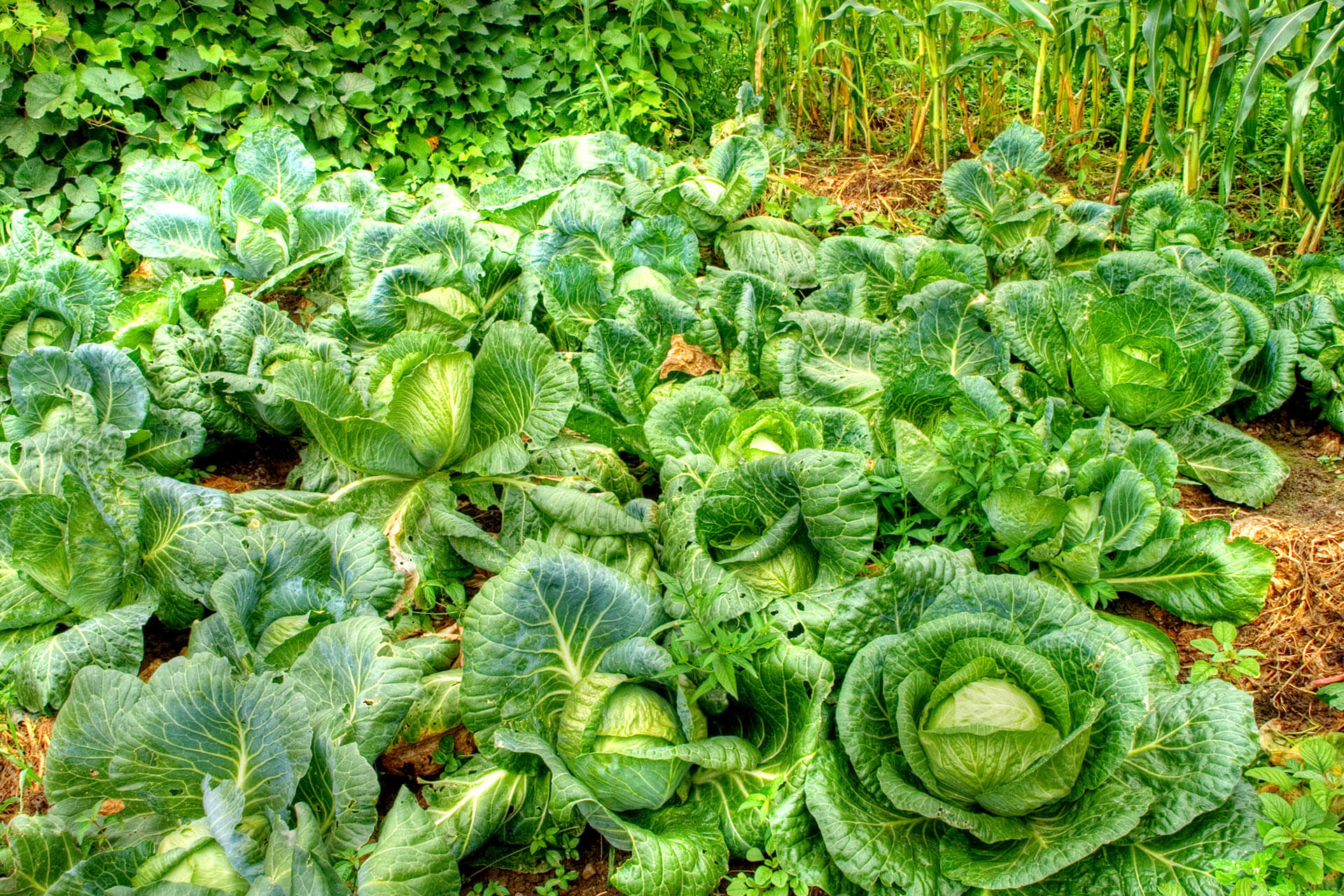Broccoli differs from cauliflower in a more delicate taste and color. These vegetables are the closest relatives. Broccoli varieties are distinguished by the length of the growing season, the color of the vegetable, and its weight. The stems of the plant with unopened flowers are eaten. Broccoli cabbage is divided into 2 types: the first type develops in the form of a whole head, and the second consists of several peduncles that are not collected in a head of cabbage (asparagus hybrids).
Varieties are distinguished by the growing season. Early species (mature in 48-96 days), for example, Moscow souvenir, Curly head, Green Magic. Mid-season hybrids (harvest in 104-128 days), for example, broccoli Batavia, Parthenon, Belstar, Romanesco, Sebastian, Agassi. Late types grow in 125-150 days, eg Monaco, Linda, Marathon broccoli.
Description of culture
This species was bred by ancient Italian breeders in the 6th-5th centuries. BC e. He came to France only in the 1500s. e., and to England in the 18th century. Breeding broccoli on a large scale began in the United States in the 20th century. After that, the vegetable received worldwide recognition.
The plant grows fast enough. In the first year, the height of the stem reaches 0.6-0.9 m. Flowering branches with small green buds extend from the top. They form a rather loose head. They are cut and eaten until the yellow flowers open. Broccoli grows well at 18-23 ° C. It is recommended to harvest the crop when the diameter of the plant head becomes 11-17 cm. After cutting off the upper part, new buds develop from the side buds. Cabbage becomes inedible if flowers have opened on it.
Growing
The summer resident begins growing a vegetable by choosing a suitable hybrid. Of the whole variety of broccoli, the following types are most popular in Russia:
- Broccoli cabbage Tonus has a growing season of 60-90 days. The mass of the central inflorescence ranges from 150-1200 g. A week after harvesting, lateral heads weighing 60 g appear. Broccoli Tonus is planted according to the scheme 0.5 X 0.5 m, moreover, from 1 sq. m beds can be harvested up to 2 kg. The plant is prone to flowering, so the gardener should visit the site as often as possible. The head color is dark blue. In frost, they acquire a brown color.
- The Batavia hybrid grows in 70 days and is colored gray-green. The head mass reaches 0.7 kg. Productivity - 2.5 kg per 1 sq. m beds.
- Marathon grows 145 days, the head is green. It is of medium size, dense in consistency. Its weight reaches 800 g, and its yield is 3 kg per 1 sq. m crops.
- Cabbage Lord has a growing season of 140-144 days. The size of the head is large enough, the consistency is dense, the texture is delicate. Weight ranges from 0.8 to 1.2 kg. Broccoli Lord is colored in light green tones, has a yield of up to 2.5 kg per 1 sq. m of soil.
- Linda grows in 130-135 days. It has a medium-sized head that is painted in gray-green tones. Its weight reaches 400 g, and the yield is 3.5 kg per 1 sq. m crops. After the first cut, 6-7 offspring appear.
- Broccoli Fiesta ripens in 80-90 days. The fruit is colored in dark green tones. The head is medium in size with a weight of 1 to 1.5 kg. It is partially covered with leaves, covered with tubercles, and has sufficient density. Fiesta is resistant to fusarium. The yield of the hybrid is 3.1 kg per 1 sq. m beds.
- Description of the species Agassi: round, gray-green head, which grows in 75 days. Its weight reaches 700 g, and the yield is 3 kg per 1 sq. m of land.
- Broccoli Fortuna has a ripening period from germination to harvest of 80-85 days. The leaf rosette is raised. The heads are gray-green. Their mass ranges from 0.3 to 0.4 kg.Fortuna cabbage can withstand frosts down to -6 ° C. It is used to prepare meals for diabetics. The yield of the hybrid reaches 2.5 kg per 1 sq. m of beds.
- A curly head grows in 90 days. This "curly" hybrid is colored gray-green, covered with many small tubercles. The fruit weight reaches 0.6 kg, and the yield is 2.3 kg per 1 sq. m beds.
- Characteristics of broccoli Moscow souvenir: vegetation period - 90-100 days, color - gray-green, fruit weight - 0.45 kg. The yield is 1.5 kg per 1 sq. m beds. The head is medium in size and dense, but has no cover leaves.
- Green Magic grows from seed to full-grown in 92 days. It has an elliptical shape, gray-green color. The weight of the fetus reaches 0.7 kg. This species grows in one stem. Productivity up to 2.1 kg per 1 sq. m beds. Suitable for preservation and freezing.
- Romanesco grows in 40-60 days. The head is painted in gray-green tones. It has a pyramidal shape. Fruit weight - 1.5 kg. The yield of the hybrid ranges from 2 to 4.5 kg per 1 sq. m of the garden.
- Sebastian has a shortened growing season, which lasts from 75 to 90 days. The fruit is colored in dark green tones. Its weight is 0.5-1 kg. Average yield 2 kg per 1 sq. m crops. The hybrid is resistant to temperature rise.
- Parthenon belongs to the late maturation group. It grows for 130-140 days. The hybrid is painted gray-green. He has a medium to large head. The plant grows in one stem. Fruit weight ranges from 600 to 900 g. Average yield is 3 kg per 1 sq. M. m of the garden.
- Belstar matures in a period of 100 to 104 days. The hybrid has an average height (1 stem). The head is of medium size, painted in gray-green shades. Fruit weight reaches 1 kg. The yield is up to 4 kg per 1 sq. m of sown area.
- Monaco belongs to the late maturing species. Its vegetative period lasts 145 days. The shape of the fruit is round, the color is gray-green. The head has a high density and medium size. Its weight reaches 0.6 kg. The yield of the hybrid is 4.1 kg per 1 sq. m beds.
- The gnome is a mid-season type of broccoli that takes 135 days to grow. The fetus has an elliptical shape with an average head size. Its mass reaches 400 g, and the yield is up to 2.3 kg per 1 sq. m crops.
To breed this plant in a summer cottage in the middle lane, seedlings are used, which are germinated in boxes with home-made or purchased soil. In the south of Russia, sowing is carried out directly on the beds. It is better to germinate the seed at temperatures above 9 ° C, otherwise the development of the hybrid will greatly slow down.
After choosing the right type of broccoli hybrid and purchasing seeds, it is advisable to discard them. For this, all instances are sorted out. Having chosen the largest ones, put them in a glass of water, the temperature of which should be about 50 ° C. You need to grow those seeds that remain at the bottom of the vessel. After that, the selected samples are immersed in cold water (temperature 10 ° C) and then soaked in a solution of a growth stimulant, for example, heteroauxin. They should be there for 8 hours.
In March, the seed is sown in pots up to 25 cm high. Pebbles are placed on the bottom with a layer of 10 mm, soil is poured on top and watered with rainwater.
The seed is immersed in the ground to a depth of 15 mm. There should be a distance of 3 cm between the holes. The room temperature is kept at 20 ° C.
After about 5-7 days, sprouts will appear, which must be sprayed with water once every 4 days. In this case, the temperature is lowered to 10 ° C for a week. The sprouts are picked after 2 weeks. After their rooting, the seedlings are fed with nitroammophos. 15 days before transplanting to the site, the plants are hardened.
You need to plant sprouts on the beds that are 40-50 days old. The soil should be neutral or slightly alkaline.
Plants are transferred to the site in May, when the air temperature rises to 16-17 ° C.Although broccoli is not afraid of a sharp drop in temperature, young sprouts planted in open ground are best covered with a film or warm material.
The seedlings are planted in holes with mineral (superphosphate) and organic (manure) fertilizers embedded in them. There should be a distance of 30-40 cm between the pits, and 0.7-0.8 m between the rows.
Care
Broccoli care consists in timely feeding, watering and loosening the soil.
In 14-15 days after transplanting, you need to prepare seedlings for hilling. Farmers often combine this operation with loosening. Do not deepen the shovel more than 8 cm because of the risk of damaging the roots.
At noon, it is better to cover the plantings to protect them from direct sunlight. Broccoli is watered once every 6-7 days, but in hot weather it is necessary to increase the irrigation intensity by 2-3 times.
The seedlings are fed 2 weeks after transplanting. To do this, use a mullein solution (0.25 kg per 10 liters of water). For 1 sq. m of the cultivated area takes up to 1 liter of the mixture. Instead of mullein, chicken manure is used, diluted with water in a ratio of 1:20.
After 20 days, the plants are given the following fertilizers:
- superphosphate - 30 g;
- potassium sulfate - 10 g;
- nitrogen components - 15 g.
All ingredients are diluted in a bucket of water. For 1 sq. m of area leaves 1.5 liters of the mixture. The same solution is poured under each plant after the first harvest. A week later, wood ash is poured under the bushes.
Benefits of broccoli
This useful vegetable is used to fight atherosclerosis. It cleanses the intestines from toxins, calms the nervous system, and is used to fight cancer and stomach ulcers. Another useful property of broccoli is that the plant is used as an antioxidant. The constant consumption of the product is recommended by WHO experts, who have proven the need for this vegetable for the body.
But there is also a contraindication to the use of a vegetable. It cannot be used for diseases of the pancreas. When acidity is high, it is forbidden to eat raw broccoli. You need to boil the product well, and then eat it. Full information on the benefits and dangers of this product is contained in medical reference books.
In many countries, it is used to create delicious dishes. Broccoli is a vegetable that is quickly cooked and then blanched. After that, it is used for salads, soups, various fillings, or you can bake it. Here is one of the best recipes:
- broccoli - 0.5 kg;
- vegetable oil - 2 tbsp. spoons;
- chicken egg - 2 pcs.;
- black pepper and salt - to taste;
- milk - 200 ml (1 glass);
- cheese (hard grade) - 0.13 kg.
Broccoli is separated into inflorescences, blanched in oil for 3 minutes. Place in a saucepan with low sides. Rub the cheese on a grater, beat the eggs, mix everything, and pour milk on top. Bake for 20 minutes in the oven at 180 ° C.
Any gardener can get a full-fledged crop if he takes into account the recommendations of specialists for the care of hybrids. A grower can find everything about broccoli and broccoli farming in agricultural catalogs. And if you do not go into the jungle of scientific literature, then the brief information above is enough to grow a vegetable in your garden.
